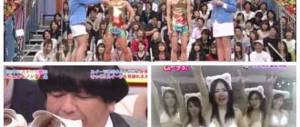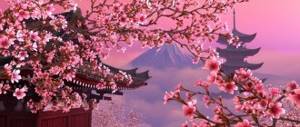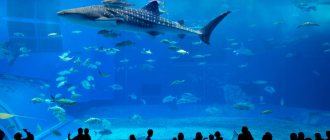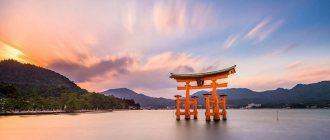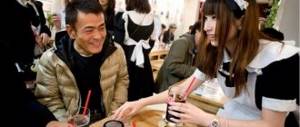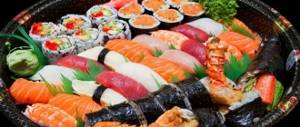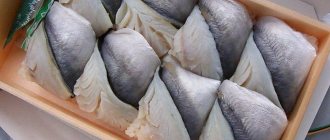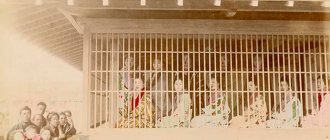Tokyo is the political and economic symbol of Japan, one of the most populated metropolises on the planet and the world's largest financial and cultural src=»https://mygeografi.ru/wp-content/uploads/2018/07/tokio.jpg» class=» aligncenter" width="600″ height="424″[/img]
Why financial is clear; the Tokyo Stock Exchange has long outdone similar exchanges in New York and London, which once divided the whole world among themselves. And Tokyo became a cultural center after the war, when Japanese tycoons, who began to become fabulously rich from American investments, began to buy up world cultural treasures in whole trains and transport it all to Tokyo in order to show the whole world that Japan is famous not only for its samurai. And it would be all the more interesting for many to know that Tokyo was not always the capital of Japan, and was not even always called Tokyo.
From the history of Tokyo
The original name of the city is Edo. If you translate this beautiful oriental word from Japanese into Russian, it will sound very prosaic: “mouth of the river.” Indeed, the historical center of modern Tokyo is located exactly at the place where the inconspicuous river flowed into what is now Tokyo Bay (the Edo Sea, or the Inner Bay in ancient times).
The heavily swampy and therefore inaccessible coastline from land attracted local pirates. They set up their bases in numerous small bays to distribute the stolen goods. However, this state of affairs did not suit the local ruler. In 1195, a fortification was built at the mouth of the Sumida-Gawa River, where a garrison was placed, which very successfully acted against the pirates, and eventually expelled them from the western shore of the bay forever.
Gradually the fortification expanded, the area was gradually drained and populated by peasants and artisans arriving from the depths of the country. And soon this land had to be defended from more significant enemies - nobles rebelling against the government and their well-armed samurai, who strove to seize someone’s possessions at any opportunity.
In 1457, a fairly large and powerful stone castle, called Edo, was erected on the site of the fortification. Another 150 years later, on the shores of a strategically convenient bay, a huge city of the same name stretched out at that time.
In those days - the 16th-17th centuries - there was an active penetration of Christians into the Japanese islands, mainly Catholic Jesuits, who began their expansion from the south of the country, and, arming local princes who had adopted Christianity along with their subjects, began to threaten the then capital of Japan - Kyoto . An internecine war began, in which the “Edo Sea” acquired very important strategic importance.
The Emperor of Japan, who had exclusively spiritual power, and his government moved from the capital to the well-fortified Edo. In fact, the nobles who ruled the country still met in Kyoto, directing military operations from there against the rebel southern princes. A road was built between Kyoto and Edo, along which communication was carried out between the two cities, and when the Europeans were expelled from Japan, and all the Christian Japanese were killed, Edo turned into what, for example, New York is now for the United States. Although the political center remained in Kyoto, Edo became the economic, cultural and religious capital. Even then, its area exceeded the largest cities in Europe - Rome, Paris, Vienna and London, and by the beginning of the 18th century its population reached a million people.
How did the name Tokyo come about?
Japan's self-isolation continued until the mid-19th century. However, immediately after the country opened its ports to foreign trade, Edo became the official capital and was renamed Tokyo (translated as the Eastern Capital, since the Western capital was previously Kyoto). The power of the “conservative Japanese boyars” ended, and the power of the “progressive Japanese boyars” began, which, however, did not increase the emperor’s influence on the country’s politics, but significantly increased his importance as a symbol of the complete unification of the nation and the economic and cultural development of the country.
Tentacles of new railways stretched from Tokyo to all regions of Japan. Many merchant ships from all over the world began to visit Tokyo Bay every day. The capital began to absorb all the surrounding cities, merging with them into one conglomerate. Already in the second half of the 19th century, almost all foreign consulates and trade missions moved from Tokyo to the nearest large city of Yokohama - there was simply no room for new structures in Tokyo itself.
The overpopulation of the city caused many problems, and one of the worst was earthquakes, which often destroyed the city and killed many inhabitants. So, in 1923, as a result of a very strong earthquake and subsequent fire, about 100 thousand people died. Half of the city simply disappeared in fire and ruins, and Tokyo had to be restored to its previous level for decades.
However, what the Tokyo residents managed to restore then was lost again, but not from the earthquake, but from American bombing, with the help of which Japan’s opponents tried to quickly persuade it to unconditional surrender. However, the Japanese were not going to give up, and by mid-1945 Tokyo was again in ruins, destroyed by fires, and the total number of victims of American attacks exceeded all losses from earthquakes in the entire history of the city .
Construction of modern Tokyo
However, with the end of the war, from which the Japanese learned very useful lessons (the main idea of which was the understanding that economic expansion is much more effective than military expansion), Tokyo literally entered a completely new era. Despite the occupation by American troops (or maybe precisely because of it), the city quickly recovered again, only this time wood was completely excluded from the range of building materials in order to prevent subsequent threats of fires.
In just one decade, a completely new ultra-modern city has grown up on the site of a huge fire. And although the problem of overcrowding in this metropolis has not disappeared, thanks to a detailed layout and widespread communications, living in Tokyo has become much easier. Within 20 years, the capital of Japan had improved so much that the Olympic Games held in the summer of 1964 were held with such success as they had never been held in almost any other country before - the whole world saw firsthand what the purposeful Japanese were capable of.
It was from this moment that the shares of everything connected with Japan began to rise uncontrollably, filling the Japanese economy with countless financial assets. The further development of the metropolis was based on the mass migration of the peasantry from agriculture due to the total automation of the latter. Work in Tokyo was found for everyone, since by the end of the 60s - mid-70s a sharp leap began to occur in the field of high-rise construction, where workers with robots, unlike other types of industry, are difficult, if not impossible, to replace.
Transport
Tokyo has a huge number of highways and interchanges. Thanks to this, getting into the boundaries of the old city from its surroundings is not difficult. The problems start closer to the center, where you can stand in traffic jams for a very, very long time. As a result, many residents refuse to use personal transport on a daily basis.
The main alternatives to cars are railways and subways. Tokyo has its own railway, allowing you to travel between areas of the city using high-speed trains. It is very comfortable.
As for the Tokyo Metro, it now includes 285 stations located on 13 lines. Daily passenger traffic is 9 million. Interestingly, the local subway has employees whose sole job is to push passengers into overcrowded cars. They are called Hosea. You can see examples of their work on YouTube. For many, this will seem savage, but the Japanese are not complaining, especially since it is very difficult to leave some stations without the help of an oshiya.
Tokiye goes to sea
The Japanese coped with the problem of overpopulation with their characteristic creativity - they began to build many artificial islands in the shallow sea, thus increasing the territory of the country. Over the past 100 years, enough of these islands have been built in Tokyo Bay to relocate a large portion of the population of Tokyo and surrounding cities.
At first industrial enterprises were built on them, but recently enterprises have been clearing them out and constructing residential neighborhoods and green parks. In addition, it would not be out of place to mention the fact that more than 50 percent of the adult working population of the capital is employed in the service sector.
In addition to the man-made islands in Tokyo Bay, the capital's administration also extends to two archipelagos that are located in the Pacific Ocean - one 100 km from Tokyo (Izu Islands), and the other 1000 km from it (Bonin Islands).
The national shrine of Japan, Mount Fuji, is located only 50 km from the outskirts of the city, and is clearly visible in almost any weather, even at night. Based on the condition of the clouds that often cover the top of the volcano, surrounding residents accurately determine the weather for the coming days. Within the Tokyo metropolitan area there are several national parks, such as Meiji Grove and Ueno Park. The latter, among other things, houses a large number of various museums, which are of undoubted interest to lovers of Japanese history, culture, science and technology.
In recent years, due to the increased seismic danger of the area, many projects have been submitted to the government for consideration to move the capital from Tokyo to quieter cities in the country. The government has already decided on the transfer, but the issue rests on the choice of a suitable locality, and it seems the matter has been shelved. However, even if the capital is moved from Tokyo to somewhere else, then Tokyo itself will not go anywhere - after all, such monsters of global urban planning as New York, Rio de Janeiro and Sydney, the significance of which does not suffer in the least from the fact that that the capitals of the USA, Brazil and Australia are located in smaller and lesser-known cities.
Transport features
There are 2 airports on the territory of the capital of Japan, one of which is international and receives flights from almost all corners of the planet, located 66 km from the center, and the other, located 16 km from the central regions, is equipped only for domestic flights.
Tokyo is a major transport hub and all districts of the district are connected to each other and to the rest of the country's populated areas via rail, bus and ferry services.
Public transport is represented by 13 metro lines, ground trains, bus routes and a taxi service. Car rental services are common throughout the city. Bicycles are very popular among local residents, and there are also plenty of rental shops.
Odaiba Island
A selection of profitable air tickets through Aviadiscounter (searches like Aviasales + a selection of airline promotions and sales).
| From where to where | departure date | Find a ticket |
| Takamatsu → Tokyo | 11.12.2021 | Tickets from 2,753 |
| Osaka → Tokyo | 20.12.2021 | Tickets from 2,903 |
| Miyazaki → Tokyo | 10.06.2022 | Tickets from 2,961 |
| Matsuyama → Tokyo | 14.12.2021 | Tickets from 2,968 |
| Nagasaki → Tokyo | 21.12.2021 | Tickets from 2,994 |
| Okinawa → Tokyo | 08.12.2021 | Tickets from 3,006 |
| Sapporo → Tokyo | 27.11.2021 | Tickets from 3,248 |
| Fukuoka → Tokyo | 27.11.2021 | Tickets from 3,495 |
| Oita → Tokyo | 13.11.2021 | Tickets from 4,103 |
| Kumamoto → Tokyo | 25.11.2021 | Tickets from 4,277 |
| Kagoshima → Tokyo | 25.11.2021 | Tickets from 4,409 |
| Hiroshima → Tokyo | 18.12.2021 | Tickets from 5,102 |
| Nagoya → Tokyo | 27.12.2021 | Tickets from 5,542 |
| Komatsu → Tokyo | 10.12.2021 | Tickets from 6,000 |
| Hakodate → Tokyo | 31.12.2021 | Tickets from 6,202 |
| Asahikawa → Tokyo | 08.12.2021 | Tickets from 6,237 |
| Obihiro → Tokyo | 18.12.2021 | Tickets from 6,795 |
| Kochi → Tokyo | 13.11.2021 | Tickets from 7,371 |
| Wajima → Tokyo | 11.12.2021 | Tickets from 7,569 |
| Seoul → Tokyo | 13.03.2022 | Tickets from 7,635 |
| Miyakojima → Tokyo | 20.01.2022 | Tickets from 7,874 |
| Okayama → Tokyo | 12.12.2021 | Tickets from 8,518 |
| Odate Noshiro → Tokyo | 14.03.2022 | Tickets from 8,989 |
| Hong Kong → Tokyo | 15.06.2022 | Tickets from 9 010 |
| Kita Kyushu → Tokyo | 15.12.2021 | Tickets from 9,285 |
| Ube → Tokyo | 26.12.2021 | Tickets from 9,990 |
| Chiang Mai → Tokyo | 20.04.2022 | Tickets from 10,204 |
| Vladivostok → Tokyo | 22.01.2022 | Tickets from 10,745 |
| Bangkok → Tokyo | 26.02.2022 | Tickets from 11,373 |
| Taipei → Tokyo | 11.12.2021 | Tickets from 11,548 |
| Iwakuni → Tokyo | 02.01.2022 | Tickets from 11,916 |
| Phuket → Tokyo | 27.05.2022 | Tickets from 12,142 |
| Yonago → Tokyo | 25.12.2021 | Tickets from 12,300 |
| Yuzhno-Sakhalinsk → Tokyo | 28.12.2021 | Tickets from 12,419 |
| Petropavlovsk-Kamchatsky → Tokyo | 28.12.2021 | Tickets from 13,259 |
| Busan → Tokyo | 25.12.2021 | Tickets from 13,428 |
| Singapore → Tokyo | 05.12.2021 | Tickets from 14,513 |
| Khabarovsk → Tokyo | 27.12.2021 | Tickets from 15,585 |
| Ibaraki → Tokyo | 21.11.2021 | Tickets from 15,820 |
| Cairns → Tokyo | 17.02.2022 | Tickets from 15,971 |
| Manila → Tokyo | 03.12.2021 | Tickets from 16,289 |
| Honolulu → Tokyo | 18.01.2022 | Tickets from 16,524 |
| Sydney → Tokyo | 14.06.2022 | Tickets from 17,416 |
| Gold Coast → Tokyo | 16.03.2022 | Tickets from 17,557 |
| Tokushima → Tokyo | 14.11.2021 | Tickets from 17,622 |
| Yakutsk → Tokyo | 12.03.2022 | Tickets from 18,045 |
| Phnom Penh → Tokyo | 30.09.2022 | Tickets from 18,056 |
| Jakarta → Tokyo | 17.11.2021 | Tickets from 18,669 |
| Kazan → Tokyo | 17.03.2022 | Tickets from 18,676 |
| Moscow → Tokyo | 28.03.2022 | Tickets from 19,241 |
| Melbourne → Tokyo | 12.04.2022 | Tickets from 19,422 |
| Voronezh → Tokyo | 04.07.2022 | Tickets from 19,651 |
| Brisbane → Tokyo | 19.04.2022 | Tickets from 20,251 |
| Novosibirsk → Tokyo | 03.01.2022 | Tickets from 20,430 |
| Los Angeles → Tokyo | 18.01.2022 | Tickets from 21,134 |
| Danang → Tokyo | 08.01.2022 | Tickets from 21,493 |
| Riga → Tokyo | 17.12.2021 | Tickets from 21,792 |
| Tallinn → Tokyo | 17.12.2021 | Tickets from 22,094 |
| Samara → Tokyo | 11.07.2022 | Tickets from 22,310 |
| Denpasar Bali → Tokyo | 07.12.2021 | Tickets from 22,635 |
| Guangzhou → Tokyo | 09.04.2022 | Tickets from 22,766 |
| Delhi → Tokyo | 01.01.2022 | Tickets from 23,547 |
| Irkutsk → Tokyo | 25.12.2021 | Tickets from 23,709 |
And to select transport in Asia, try 12Go.asia, the service offers the best ways to travel along popular routes.
Or rent a car or bike with the lowest price guarantee and plan your own routes.
These Tokyoites are music lovers
In conclusion, I would like to tell you about one interesting fact, known only to music lovers and those associated with music. Many (if not all) musicians, when some creative and financial problems begin in their homeland, without any hesitation, pack their suitcases and equipment and go on tour to Japan. “Only in Tokyo am I accepted with open arms at any time of the year and under any circumstances,” once said the famous rock musician Michael Schenker, who once founded the legendary band “Scorpions” with his brother, and later became the frontman of the immortal “UFO” " “And only in Tokyo can I feel at home.”
For those who don’t believe, we advise you to look through the discography of all the popular musicians of the last decades - almost everyone has “live” albums with the titles “Made in Japan”, “Live in Tokyo”, “One night at Budokan” and other similar ones, or even not one album, and not two, but several at once.
Scientific institutions.
There are over 50 state, municipal and private universities and colleges in Tokyo, incl. such prestigious ones as the public University of Tokyo (“Tokyo Daigaku”, or “Todai” for short) or the private universities of Waseda and Keio. The Japanese Academy of Sciences, the Japanese Academy of Arts, over 100 research institutes, laboratories and centers at universities, about 40 at ministries and departments, including the National Aerospace Laboratory, the National Cancer Center, and the National Research Center for Disaster Protection are also located here. , research institutes of health care, hygiene, natural resources, population problems, etc. Largest libraries: National Parliamentary Library, university libraries.
Tourist Tokyo
An amazing harmony of ancient traditions and high technology reigns in the city of Tokyo. This creates the illusion of the materiality of time, which, on the one hand, is frozen in ancient monuments, and on the other hand, rushes past at breakneck speed in technical innovations. There are many attractions in Tokyo that tourists should definitely visit.
Imperial Palace
The Imperial Palace is the main and most popular attraction in Tokyo. It is located on the territory of the same Edo Castle. Built in the middle of the 19th century.
The fortress is located in the center of the metropolis and includes 2 ground floors and 1 underground. Massive walls and wide ditches isolate this symbol of statehood from the bustle of the world and simply attract the attention of tourists. The architecture is in a traditional style, restrained and simple. Unfortunately, you can only admire this majestic building from afar. Entrance to the palace for outsiders is prohibited. But even from a distance, the imperial palace is remembered for its grandeur and aura of power.
Climatic features
The Tokyo district has a moderately warm climate with high rainfall, hot summers and mild weather in winter. August is considered the warmest month - the air at this time warms up to +27...+30⁰C. The maximum temperature drop is recorded in January - thermometer columns can drop to 0⁰C. The bulk of precipitation falls in the form of rain and occurs in early summer and autumn. Snow falls, as a rule, 1-2 times a year.
The best time to visit the metropolis is spring - during this period the weather is dry, warm, all the gardens and green spaces in the city are in bloom and the delightful aroma of sakura is in the air.
Meiji Shrine
Shinjuku Imperial Park
Shinjuku Imperial Park is probably the most beautiful place in Tokyo. Founded at the beginning of the 20th century, the park first belonged to the imperial family. Now access here is open to everyone. The amazing layout of the garden divides it into three parts.
A Japanese garden with a tea house sets the mood for contemplation. The English and French parts are reminiscent of Old World landscape finds. More than 10 thousand trees delight you with their blooms in spring; in summer you can’t take your eyes off the blooming hydrangeas and myrtle. In autumn, lilies and chrysanthemums bloom. The winter landscape makes you freeze in admiration, as if in front of a painting by a great master.
Toyota Mega Web Exhibition Center
The Toyota Mega Web Exhibition Center is one of the most interesting places in Tokyo, especially for car enthusiasts. It is located on Odaiba, in the Palette Town entertainment center.
The exhibition center tells about the history and development of the Japanese automobile industry. Entering the museum's vaults, visitors find themselves in the amazing world of cars, from the very first models that seem to have rolled off the assembly line yesterday to the latest developments. You can even ride on many models. The main part of the exhibition is focused on the history of the development of the Toyota brand. Not only well-known models are presented, but also those that did not go into production.
Rare cars occupy a separate room; exhibits in the following rooms tell about the features of the cars. Test drives for children and adults allow you to ride right through the pavilions.
Entertainment and shopping complexes.
Tokyo residents' favorite vacation spots are parks and squares, but their area is only about 5 thousand hectares. The most famous are the park in the area of the imperial palace, as well as the Hibiya, Meiji, and Ueno parks. Asakusa Park and its surrounding streets form the largest entertainment district in Tokyo. There are many restaurants, theaters, and souvenir shops here. Ginza is a “showcase” of Tokyo and all of Japan, a traditional shopping and cultural center with many department stores, cafes, restaurants, cinemas and other leisure facilities. Shinjuku is a historical entertainment district. It is currently built up with skyscrapers housing many nightclubs. Two stops from the Main Station is the computer pleasure district - Akihabara; shops selling household electrical appliances and electronics are concentrated here (products come to the shelves directly from factory conveyors, bypassing intermediaries). In 1983, Disneyland opened 10 km from the city center (48 hectares, 7 thematic zones), which is extremely popular.
Statue of Liberty
Tokyo has its own Statue of Liberty. The same as in New York and Paris. It is installed against the backdrop of the Rainbow Bridge.
If you are not yet completely tired of walking, then on the way back from the island you should get off at Shiodome Station, this is where Miyazaki’s magic clock is located. In summer the last bell is at 22:00, in winter - at 20:00. Do not miss.
Disneyland in Tokyo
When you are in Tokyo, be sure to visit one of the largest parks in the world - Disneyland. It is located on the outskirts of the capital. From afar, it can be mistaken for the embodiment of a fairytale dream. However, the park's attractions are quite tangible and will not leave any visitor indifferent. The change of scenery makes your head spin: the African jungle gives way to a ballroom, which immediately turns into a spaceship, and now an old train is slowly taking you towards new adventures.
Tokyo Disneyland opened in the spring of 1983 and has already welcomed more than 300 million people. The annual renovation of the park maintains its attractiveness for tourists. The territory is divided into several thematic sectors, and parades and celebrations with the participation of Disney characters are regularly held in all sectors of the park. At night you can see a fireworks show accompanied by music. The festive atmosphere of this park will live in your memories for a long time.
Miraikan Museum
This Tokyo landmark showcases the technology of the future. The creator of the museum is considered to be the Japan Science and Technology Agency. The first impression is admiration for human thought, which covers a wide range of issues.
The most daring scientific projects have found their embodiment within the walls of this Tokyo landmark. The exhibition occupies 6 floors and is divided into separate themes. Many areas are interactive; most of the exhibits can be touched with your hands. Several times a day, the humanoid robot ASIMO performs at the Miraikan Museum. He talks, goes up the stairs and plays with a ball. The museum hosts lectures and shows films.
Planning a trip for several days
It will take more than one week to see all the diversity of the Japanese capital with its historical sights and rich unique culture. What to see first in Tokyo depends on the length of your trip. If you have 3-4 days allocated to visit the capital, then you should explore the places that are symbols and calling cards of the city. These include the Imperial Palace, Meiji Temple, Skytree Tower, Tokyo National Museum, and the artificial island of Odaiba.
The artificial island of Odaiba looks like a futuristic city: modern buildings, unusual shopping centers, developed infrastructure and breathtaking views
If you have some free time, you can take a one-day trip to Mount Fuji or one of the picturesque islands of Tokyo, take a river cruise on the Sumidagawa River with 13 bridges, or attend a tea ceremony in one of the Japanese gardens. An interesting option might be an excursion to neighboring cities:
- Nikko, famous for its huge national park with magnificent lakes and Kegon Falls, as well as the shrine of the Japanese Emperor Toshogu and the ancient Futarasan Temple (872);
- Kyoto, the former capital of Japan with imperial palaces, wooden houses, Japanese gardens, sacred places, where the spirit of antiquity still reigns;
- Nara, known for its centuries-old history, ancient temples and ancient buildings, is interesting to tourists for its museums, the statue of the Great Buddha, and the historical village of Yoshino.
When planning a trip for a longer period (a week or more), you should include an excursion to the open-air museum in the village of Hakone in your itinerary. This is a great opportunity to combine outdoor recreation with viewing works of art. The museum's permanent collection includes more than 100 sculptures and paintings by famous foreign and Japanese sculptors and artists.
In the village of Hakone, in the shadow of the majestic Mount Fuji, there is Japan's first open-air museum park.
Tokyo Tower
Japan accepts world ideas and successfully assimilates them. This is what happened with the TV tower. The Eiffel Tower was taken as a basis, but scientists managed to lighten it by almost half and make it seismically resistant, which is important in this country, which is constantly slightly “shaken.” Erected in 1958, Tokyo Tower has become one of the symbols of the capital. In addition, it carries most of the digital broadcasting load in and around the city.
When sightseeing in Tokyo, be sure to add this place to your list. Here you can climb to observation platforms that offer a 360-degree view. A four-story building was built at the foot of the tower. It houses a wax museum, one of the best aquariums in Japan, an exhibition of optical illusions, a restaurant and several souvenir shops.
Ancient capital
The founding date of Edo is 1185-1333, during the Kamakura samurai regime. It was named after the governor of the Kanto region, Edo Shigenaga. Thanks to the accessibility of land and sea routes, the ruler decided to turn this settlement into his own headquarters. Also due to the decision of the Minamoto prince Tokugawa Ieyasu to establish the Tokugawa shogunate there in 1603 , Edo was transformed into the capital it is today.
Senso-ji Temple
Senso-ji Temple is the oldest Buddhist temple in Japan, dating back to the 7th century. During the Second World War it was destroyed and restored according to drawings and drawings of the 17th century in 1958. Despite its status as a tourist site, the temple is still operational.
Pilgrims are greeted by the gate of thunder, which is guarded by two deities: Thunder and Wind. Behind the gate begins a shopping street with souvenir shops. It ends with a two-story gate, where ancient religious books are kept in the treasury. The temple complex itself includes 5 pagodas and a central hall with a statuette of the deity of mercy Kannon. In the evening, when the lights are on, this architectural landmark of Tokyo appears in a fabulous form.
Communications and Wi-Fi
Throughout Japan, there is a special free application Japan Connected-free Wi-Fi. It allows you to connect to wireless Internet at all free hotspots in Tokyo. Compatible with both Android and iPhone.
Tourists can enjoy free Wi-Fi for 2 weeks using NTT East Free Wi-Fi Japan. To do this, you should register on the website https://www.ntt-bp.net/jcfw/en.html upon arrival in Japan and receive a card at one of the tourist points, a shopping center (Ginza) or right at the airport.
If you want to have constant access to the Internet or always stay in touch, you can purchase a special tourist SIM card at the airport. They have affordable rates.
Tsukiji Fish Market
The Tsukiji Fish Market resembles a natural science museum. Japan is so rich in seafood that sometimes you forget that this is not the seabed, but shopping arcades. More than 400 species of marine life can be found on the shelves.
Daily trade turnover reaches 2 thousand tons of fish and seafood. The market is located almost in the city center. His day begins at 4 a.m., when a bustling movement of workers fills the area with shouts and laughter. The most impressive spectacle is the tuna auction, which starts at 5 am. Huge carcasses of the freshest fish are sold and bought by connoisseurs in a few minutes. And when the first employees appear in the offices, the fish market is already finishing its working day. The external part of the market operates in a completely different mode. It welcomes guests with a variety of goods and a calmer rhythm of existence. Here you can try many local dishes in small cafes and restaurants.
0 0 votes
Vote for the article!
Culture.
The city has 400 art galleries, as well as several dozen state, municipal and other museums, among which the most interesting are the Tokyo National Museum, the Edo-Tokyo History Museum, the Okura Shukokan Museum, the Nezu Museum, the National Science Museum, the National Museum of Western Art, and the National Museum of Modern Art. art, Bridgestone Museum, Museum of Folk Crafts, Museum of Calligraphy, Ota Museum with an exhibition of Japanese ukiyo-e prints, Sword Museum, Fuji Museum, Sumida River Museum. Among the small, sometimes unusual museums are the Museum of Glasses, the Museum of Lighters, the Museum of Bags, the Museum of Bicycles, and the Museum of Plumbing. Theatres: National Noh Theatre; National Theatre; New National Theatre; Kabukiza Theater; Engey Hall. Concert halls: “Ueno bunka kaikan”, “Nitigakijo” (for variety performances), “Kokusai gekijo”, “Koseinenkin kaikan”, “Toyoko horu”; the huge hall of the Japan Broadcasting Corporation (NHK), famous for classical music concerts.

